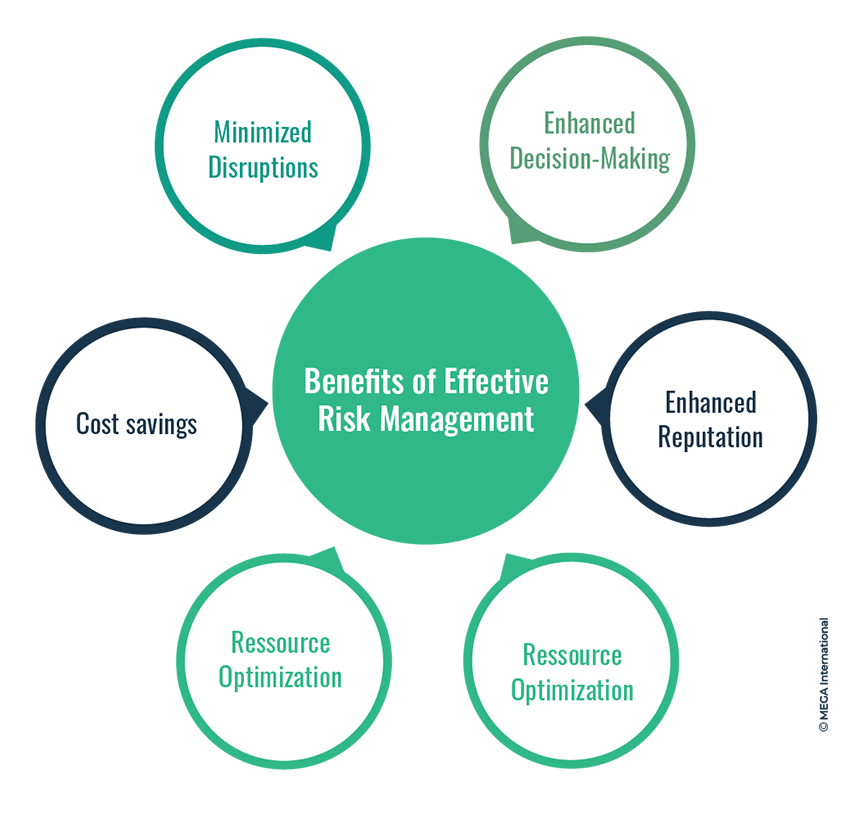Exploring the Increasing Importance of Risk Management in Organizational Strategy
Exploring the Increasing Importance of Risk Management in Organizational Strategy
Blog Article
The Critical Importance of Risk Management in Achieving Organizational Goals
In the swiftly developing organization landscape, the capability to browse uncertainty has actually become a crucial. This is where Risk Management action in, supplying an organized approach to determining, assessing, and mitigating prospective obstructions to proceed. It's greater than just a protective measure - it's a critical device, fostering durability and advancement. As we explore the important duty of Risk Management in accomplishing organizational objectives, one can't wonder yet aid: exactly how does this equate into real-world success?
Understanding the Idea of Risk Management in Service

The Essential Function of Risk Management in Strategic Planning
Integrating Risk Management right into strategic preparation acts as a guard for companies, securing their lasting plans with a strong structure of preparedness and strength. Risk Management provides a structure for expecting uncertainties and creating appropriate reactions, ensuring the company's survival and prosperity also in the face of misfortune. By integrating Risk Management right into calculated planning, companies can change these uncertainties right into opportunities for development and advancement.

Techniques for Identifying, Assessing, and Focusing On Threats
The procedure starts with Risk recognition, employing tools such as SWOT evaluation, which aids in determining possible threats and chances. Next off, Risk evaluation is conducted to ascertain the potential influence and probability of each Risk. Dangers are focused on based on their possible effect and likelihood, permitting organizations to focus their resources on critical dangers.
Securing Organizational Operations Through Efficient Risk Management
In business landscape fraught with uncertainties, reliable Risk Management plays an essential role in guarding organizational operations. It works as a protective guard, reducing the negative results of prospective risks and guaranteeing the smooth functioning of all procedures. By determining and evaluating potential risks, Risk Management enables organizations to establish durable contingency plans. This preventative technique aids in keeping functional security, even when challenged with unforeseen scenarios. Basically, Risk Management is the lifeline that keeps the business operations afloat among unstable waters. It makes certain not just the survival however the lasting growth of a company, making it a vital tool in attaining service objectives. For this reason, organizations have to purchase thorough Risk Management techniques to guard their operations.

Transforming Possible Dangers to Opportunities: The Power of Risk Management
A proactive approach to run the risk of Management involves identifying, assessing, and focusing on threats to design approaches that transform them into potential benefits. visit here Thus, by leveraging the power of Risk Management, companies can not only safeguard their procedures yet likewise spur growth and achieve their goals in an unpredictable company setting.
Case Studies: Success Stories of Risk Management Driving Business Objectives
Effective implementation of Risk Management approaches has generated impressive outcomes in numerous companies, emphasizing the merits of this strategy. Multinational business like Microsoft and Google, for circumstances, have leveraged Risk Management to lessen dangers and exploit chances, driving their organization objectives ahead. These instances highlight how successful Risk Management can not just guide companies clear of possible challenges but additionally direct them in the direction of their strategic objectives.
Conclusion
Finally, Risk Management is essentially crucial in attaining organizational goals. It uses an organized strategy to recognizing, evaluating, and resolving possible threats and opportunities. More than just mitigating risks, it also promotes technology, strength, and lasting development. By incorporating Risk Management into critical planning, companies can better navigate uncertainties, safeguard operations, and capitalise on opportunities, thereby aligning with long-term purposes.
At its core, Risk Management is the procedure of recognizing, examining, and resolving prospective risks that could adversely affect an organization's operations or purposes. Next off, Risk evaluation is conducted to ascertain the possible effect and possibility of each Risk. Threats are prioritized based on their potential influence and possibility, allowing companies to concentrate their sources on critical dangers. By identifying and assessing potential hazards, Risk Management allows companies to establish the original source durable contingency strategies. A proactive strategy to take the click to read more chance of Management includes recognizing, examining, and focusing on dangers to devise approaches that turn them into possible benefits.
Report this page